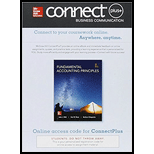
1)
Introduction:
Accounting treatment of Loans and Borrowings (Non-Current Liabilities)
- Loans and Borrowings are long term negotiable instruments of debt issued by corporate entities to secure funds and fund either long term capital expenditure or similar long term investment opportunities.
- Loans and Borrowings are accompanied by periodic interest payments. They are issued at par, at premium or at a discount.
- Loans and Borrowings when issued at a discount represent a loss to the company since the repayment value is more than the value of the Loans and Borrowings borrowed.
- Journal entries are the first step in recording financial transactions and preparation of financial statements.
- These represent the impact of the financial transaction and demonstrate the effect on the accounts impacted in the form of debits and credits.
- Assets and expenses have debit balances and Liabilities and Incomes have credit balances and according to the business transaction, the accounts are appropriately debited will be credited by credited to reflect the effect of business transactions and events.
To Prepare:
Journal Entries to record cash issuances of Loans and Borrowings
2)
Introduction:
Accounting treatment of Loans and Borrowings (Non-Current Liabilities)
- Loans and Borrowings are long term negotiable instruments of debt issued by corporate entities to secure funds and fund either long term capital expenditure or similar long term investment opportunities.
- Loans and Borrowings are accompanied by periodic interest payments. They are issued at par, at premium or at a discount.
- Loans and Borrowings when issued at a discount represent an loss to the company since the repayment value is more than the value of the Loans and Borrowings borrowed.
Journal Entries
- Journal entries are the first step in recording financial transactions and preparation of financial statements.
- These represent the impact of the financial transaction and demonstrate the effect on the accounts impacted in the form of debits and credits.
- Assets and expenses have debit balances and Liabilities and Incomes have credit balances and according to the business transaction, the accounts are appropriately debited will be credited by credited to reflect the effect of business transactions and events.
To Prepare:
Journal Entries to record cash repayments of Loans and Borrowings
3)
Introduction:
Accounting treatment of Loans and Borrowings (Non-Current Liabilities)
- Loans and Borrowings are long term negotiable instruments of debt issued by corporate entities to secure funds and fund either long term capital expenditure or similar long term investment opportunities.
- Loans and Borrowings are accompanied by periodic interest payments. They are issued at par, at premium or at a discount.
- Loans and Borrowings when issued at a discount represent a loss to the company since the repayment value is more than the value of the Loans and Borrowings borrowed.
To Determine:
Calculate premium or discount on Loans and Borrowings
4)
Introduction:
Accounting treatment of Loans and Borrowings (Non-Current Liabilities)
- Loans and Borrowings are long term negotiable instruments of debt issued by corporate entities to secure funds and fund either long term capital expenditure or similar long term investment opportunities.
- Loans and Borrowings are accompanied by periodic interest payments. They are issued at par, at premium or at a discount.
- Loans and Borrowings when issued at a discount represent a loss to the company since the repayment value is more than the value of the Loans and Borrowings borrowed.
To Determine:
Whether contract rate is higher or lower than market rate at the time of issuance.
Want to see the full answer?
Check out a sample textbook solution
Chapter 14 Solutions
Connect 2-Semester Access Card for Fundamental Accounting Principles
- What is Bobby's 2019 net income using accrual accounting?arrow_forwardJob 786 was one of the many jobs started and completed during the year. The job required $8,400 in direct materials and 35 hours of direct labor time at a total direct labor cost of $9,300. If the job contained five units and the company billed at 70% above the unit product cost on the job cost sheet, what price per unit would have been charged to the customer?arrow_forwardWhat is the company's gross profit?arrow_forward
- MOH Cost: Top Dog Company has a budget with sales of 7,500 units and $3,400,000. Variable costs are budgeted at $1,850,000, and fixed overhead is budgeted at $970,000. What is the budgeted manufacturing cost per unit?arrow_forwardWhat was Ghana's cost of goods sold for 2023?arrow_forwardNeed Answerarrow_forward
- Sameer has $9,800 of net long-term capital gain and $5,200 of net short-term capital loss. This nets out to a: (a) $4,700 net long-term loss (b) $4,600 net long-term gain (c) $4,700 net short-term gain (d) $4,700 short-term loss helparrow_forwardWhat is the adjusted cost of goods sold for the year?arrow_forwardcan you show the step by step i am confused on a partarrow_forward

 AccountingAccountingISBN:9781337272094Author:WARREN, Carl S., Reeve, James M., Duchac, Jonathan E.Publisher:Cengage Learning,
AccountingAccountingISBN:9781337272094Author:WARREN, Carl S., Reeve, James M., Duchac, Jonathan E.Publisher:Cengage Learning, Accounting Information SystemsAccountingISBN:9781337619202Author:Hall, James A.Publisher:Cengage Learning,
Accounting Information SystemsAccountingISBN:9781337619202Author:Hall, James A.Publisher:Cengage Learning, Horngren's Cost Accounting: A Managerial Emphasis...AccountingISBN:9780134475585Author:Srikant M. Datar, Madhav V. RajanPublisher:PEARSON
Horngren's Cost Accounting: A Managerial Emphasis...AccountingISBN:9780134475585Author:Srikant M. Datar, Madhav V. RajanPublisher:PEARSON Intermediate AccountingAccountingISBN:9781259722660Author:J. David Spiceland, Mark W. Nelson, Wayne M ThomasPublisher:McGraw-Hill Education
Intermediate AccountingAccountingISBN:9781259722660Author:J. David Spiceland, Mark W. Nelson, Wayne M ThomasPublisher:McGraw-Hill Education Financial and Managerial AccountingAccountingISBN:9781259726705Author:John J Wild, Ken W. Shaw, Barbara Chiappetta Fundamental Accounting PrinciplesPublisher:McGraw-Hill Education
Financial and Managerial AccountingAccountingISBN:9781259726705Author:John J Wild, Ken W. Shaw, Barbara Chiappetta Fundamental Accounting PrinciplesPublisher:McGraw-Hill Education





